When managing expansive engine driven gear on an occupation site a standout amongst the most disregarded issues is sound level. In the most genuine feeling of the word a sound wave can be characterized as any unsettling influence that is engendered in a versatile medium, which might be a strong, fluid or gas. Commotion can be characterized as any undesirable sound apparent by the hearing feeling of people.
Laborer presentation to inordinate or dreary clamor over a drawn out stretch of time can bring about hearing misfortune. The making of an over the top wellspring of commotion into a domain can be possibly perilous, and in addition upsetting to adjacent business occupants and inhabitants. Intemperate clamor control measures have been instituted at the national and nearby levels to keep up both wellbeing and true serenity. Commonly, directions are packaged together in view of the land utilize attributes and the closeness to private or other sensitive territories.
Clamor control regulation includes a framework making out of three essential things: sound, way and recipient. Prior to an answer for a perplexing clamor issue can be planned, the overwhelming wellspring of commotion contamination must be known, the attributes of the transmission way should be found and an adequate level of commotion allowed must be set up.
Amid the establishment of an electrical generating framework, numerous field elements can add to deviations of real Sound Power Levels (SPL: Total sound transmitted from a source as for a reference power of Watts) versus anticipated levels of sound. The clamor that is available in the natural condition of the genset before establishment is alluded to as encompassing commotion. The surrounding, or foundation clamor, ought to be estimated and computed before the establishment of gear. Along these lines, an edge of wellbeing ought to be connected to figured esteems if all field conditions are not completely contemplated. For instance, structures, dividers, signs and helper hardware generally change the sound field. Impediments inside the sound way will mostly reflect, assimilate and transmit sound. It is vital to contemplate field conditions and know the nearby decibel laws before setting out on an electrical age venture.
Sound waves should be represented noticeable all around as well as in strong and fluid structures also. Airborne sound is ordinarily made by the vibration in solids or turbulence in liquids. Note that sound waves in solids and fluids can travel extraordinary separations previously creating capable of being heard sound noticeable all around. A case of vibrational clamor would be the capacity to hear a prepare through the rails at a long separation before the airborne transmission of sound waves. It is this sort of sound transmission that in many cases makes it hard to acoustically seclude generator sets. Without sufficient vibration separation of the slip base on a generator, vibrations will travel unopposed through the slide, so a great part of the clamor isn’t subjected to acoustic hosing frameworks composed into the sound attenuated fenced in area.
In a perfect world, utilized generators ought to be mounted on isolators, or on a solid cushion with the sound attenuated nook totally encompassing the base of the unit. Indeed, even little spillages in the framework can contribute incredibly to general sound levels. Gaskets ought to be considered to keep any clamor spills however holes in an uneven solid surface or around fenced in area obtrusions. Liquid coursing through channels can likewise create emanated sound that can be transmitted through a building or encased structure. Sound constriction can be connected through furrowed couplings for channels and electrical connectors. Where required, associations ought to be adaptable or sufficiently detached to forestall transmission or vibration to the sound attenuated fenced in area dividers.
Table of Contents
Commonly Used Sound Absorption Materials
At the point when sound waves are created they are naturally reflected when they hit a hard surface. Introducing a retention surface over hard surfaces in many generators can decrease a portion of the reflected sound. In a live with hard surfaces, delicate materials, for example, spongy roof panels, floor mats or covering, and blinds or uncommon retentive divider covers, will decrease commotion by reflecting sound. Just reflected sound can be stifled as portrayed, while coordinated sound won’t be specifically influenced in any case.
By far most of sound retention composites are contained permeable materials of differing thickness which change over sound vitality into warm inside the open pores of the material. While investigating sound stifling encasings it is best to search for materials with air channels that are available to the surface so sound waves can spread into the material. On the off chance that pores are fixed, as in shut cell froth, the material is for the most part a poor safeguard. Any pores ought not be fixed by paint, covers or any defensive covers. Auxiliary uprightness protecting for sound retention material ought to dependably be punctured if connected.
When starting the material assessment process preceding a task a couple of key components must be considered. The principle metric when estimating for sound retention comes down to a material’s capacity to assimilate vitality characterized as the ingestion coefficient. The ingestion coefficient is numerically characterized as the proportion of sound vitality waves consumed by a given surface in connection to the sound vitality occurrence upon the surface. Ingestion coefficient can fluctuate in the vicinity of 0 and 1. For instance, a = 0.8 then 80% of the sound vitality will be retained. Another approach to see sound coefficient levels is by taking a gander at an open entryway or window. Sound waves are assimilated through the opening of the window 100% a = 1 as opposed to being reflected over into the room. The retention coefficient is entirely reliant on frequency, and is typically printed for either an octave or 1/3 octave groups. Permeable engineered sound safeguards are most effective at higher frequencies, while enhancing the materials thickness, or mass, can expand low frequency assimilation.
At the point when low frequency sound assimilation is required, panel sound retention materials frequently are the arrangement. Thin, adaptable panels are mounted far from the divider, making a shallow air cavity between the material of the two. This air stash between the panel and divider makes a methods for sound ingestion at normally tuned low frequencies. Sound waves, at the frequency of intrigue, create a resounding impact inside the air stash which makes the panel vibrate. By basically filling the cavity with an optional permeable material one can diminish the sharpness of the tuning. This sort of sound lessening arrangement can be inhibitive and is generally used to treat a particular tone or restricted band from the culpable wellspring of sound.
The customary way to deal with sound lessening uses a sound engrossing material sandwiched between a punctured coating and the outer structure. The punctured fixing normally comprises of different examples with little uniformly separated gaps that can successfully retain sound at basic “tuned” frequencies. Medium and bigger apertures are utilized for bring down pitched frequencies however are not as normally utilized. The punctured confronting is developed on the highest point of the permeable sound retaining material. Contingent upon the thickness, separating and gap estimate the confronting can likewise expand assimilation to the general structure at specific frequencies. Most high frequency sounds are diminished fundamentally utilizing this framework as a result of reflections from the strong regions of the confronting. A punctured confronting outline where the open hole is no less than 20% of the general material won’t essentially corrupt the retention of high frequency sound over the commonplace range. Anything more than 20% will affect the general ingestion of sound.
Sound Attenuated Generator Set Structures
On the off chance that one of the walled in area’s prerequisites is sound constriction then mechanical and ignition air debilitate information must be found out before settling on an obtaining choice. This data is normally accessible from the maker communicated in decibels at a foreordained separation from a commotion source. That information may likewise incorporate a full clamor range examination, which any qualified fenced in area producer can translate for the client. It is critical to likewise incorporate the commotion rating of the radiator from the producer; this incorporates remote radiators too.
Note that measurements, clamor and wind current necessities can shift extraordinarily from producer to make for a given kW rating. For instance, a 2013 800 kW generator won’t deliver precisely the same example as a 2004 800 kW generator. Every unit is somewhat extraordinary. When estimating numerous nooks for in excess of one generator set, regardless of whether it is a sound attenuated or weatherproof fenced in area, it is prudent to settle on a choice in light of the most pessimistic scenario information so the sound attenuated walled in areas will work with all generator sets considered for the venture.
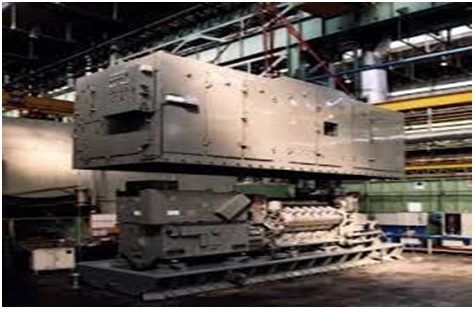
Generator set structure
Nuts and bolts of Mass Law
Mass law alludes to the transmission loss of particles in strong panels, and expresses that inside a constrained frequency run, the greatness of the misfortune is controlled completely by the mass per unit zone of the divider. The mass law’s fundamental primary expresses that transmission misfortune expands 6 decibels for each multiplying of frequency, or each multiplying of the divider mass per territory, up to a level for a given frequency. For instance, a lead sheet has a transmission loss of 13 dB at 63 Hz, 19 dB at 125 Hz, 25 dB at 250 Hz and so forth… If you were to twofold the thickness of the lead sheet 1/16 in. to 1/8 in. thick, the lingering transmission misfortune at 63 Hz moves toward becoming 13 + 6, or 19 dB. The blend of lightweight materials and mass layers are commonly utilized as a part of mix of each other to give a composite layer that is sufficient to accomplish the coveted sound weakening required.
Nuts and bolts of Mass Law
Mass law alludes to the transmission loss of particles in strong panels, and expresses that inside a constrained frequency extend, the greatness of the misfortune is controlled altogether by the mass per unit zone of the divider. The mass law’s fundamental main expresses that transmission misfortune expands 6 decibels for each multiplying of frequency, or each multiplying of the divider mass per territory, up to a level for a given frequency. For instance, a lead sheet has a transmission loss of 13 dB at 63 Hz, 19 dB at 125 Hz, 25 dB at 250 Hz and so forth… If you were to twofold the thickness of the lead sheet 1/16 in. to 1/8 in. thick, the lingering transmission misfortune at 63 Hz moves toward becoming 13 + 6, or 19 dB. The blend of lightweight materials and mass layers are normally utilized as a part of mix of each other to give a composite layer that is satisfactory to accomplish the coveted sound weakening required.
Commotion Resonance
All materials, regardless of whether man made or natural, have a natural method of vibration known as reverberation frequency. Reverberation frequency definition depends on numerous attributes, including mass. Lightweight slip mounting structures under generators can here and there result in higher general commotion levels because of vibration of the base by the compelling frequency rushes of the engine, along these lines bringing about enhancement of the sound weight level at that given frequency. Reverberation can be every so often observed in paneled structures, or base structures where a “drumming” influence is prevailing and will really open up the sound source. While choosing a generator it is critical to contemplate the best possible vibration isolators. Great isolators, introduced on generators, turn out to be exceptionally basic in hosing the driving frequency of the engine and disengaging it from whatever is left of the structure.
Covers
Most machine segments and interconnecting channeling frameworks come standard with warm protecting wrappings to both give insurance to operating work force from consumes and also avert inordinate warmth misfortune. Extensive hardware like generators or turbines commonly requires associating administration channeling, which can likewise be the wellspring of extreme clamor. Much of the time, it is habitually conceivable to acquire both acoustical and warm protection through a solitary composite treatment to the outside of the pipe or metal segment. The most ordinarily utilized protection wrapping materials on generators are froth composites or a compound shower that is painted over the pipe.
Suppressors/Noise Silencers
The utilization of clamor silencers is an important method to control commotion originating from engine ignition, fans and blowers. Clamor silencers are ordinarily separated into 3 composes: receptive, absorptive and a mix of responsive/absorptive. Receptive silencers work best at engrossing lower level frequencies while absorptive silencers accomplish considerably more noteworthy sound weakening at higher frequencies. A more successful and general enveloping plan to meet a wide assortment of acoustical difficulties would incorporate an arrangement of both responsive and ingestion components. The correct choice of a silencer relies upon various diverse components including stream rate, commotion range, temperature, moistness, suitable backpressure and so on…
Most Common Sound Attenuated Enclosures
The most well-known gadget used to mute clamor from generators is acoustical fenced in areas. Regular sound attenuated generator walled in areas comprise of panels that are multi-layered composite medicines involving an impenetrable outside layer and also a layer of permeable sound assimilation material looking towards within the hardware. The principle ingestion layer is impenetrable which obstructs the entry of sound vitality transmitted by the encased wellspring of sound from the generator. The permeable sound engrossing covering will disperse the held sound vitality, and furthermore give warm protecting properties. In a regular skin-tight sound attenuated nook, upkeep is performed from outside pivoted entryways and the air admission louvers.
Climate Proof versus Climate – Protective Enclosures
Notwithstanding sound attenuated walled in areas one must decide whether weatherproof nooks are required also. The principle choice comes down to regardless of whether the client needs a climate defensive or climate evidence walled in area. At the point when the client just needs to keep rain and additionally snow off of the generator set under typical expected climate conditions, the arrangement is a basic climate defensive fenced in area. Alternatives incorporate a climate defensive walled in area that is regularly skintight more often than not provided by the generator set producer or a dribble evidence climate safe nook from a particular generator set fenced in area maker.
Under more outrageous conditions a full climate confirmation walled in area may be required. Climate verification fenced in area ought to be utilized when the generator set needs to withstand outrageous conditions, for example, wind, precipitation, seismic movement or temperature. Weatherproof manages that the passageway of rain, snow, slush or hail might not harm the alternator or engine inside the fenced in area. Parameters, for example, compelling breeze stacking (in miles every hour) or rooftop stacking (in pounds per square foot) in snow or ice-inclined areas and rain entrance protection (in ounces of water per square foot of gulf opening every hour) can be utilized look at potential fabricates and guarantee a dependable arrangement of insurance.
A really weatherproof walled in area for a generator will withstand tropical storm drive ends up to 150 mph and a significant measure of snow (more noteworthy than 30 lbs/ft2 without lasting misshapening of the structure. As dependably it is essential to take note of that genuinely the expression “weatherproof” is subjective from producer to maker. UL 2200 arrangements particularly with genset codes and models. UL2200 characterizes to levels of security for the introduced genset. The main definition is with respect to the expression “Rainproof” which is characterized as permitting neither wetting of a live part nor passageway of water over the least live part. “Raintight” is characterized as no passage of water into the walled in area at all. These UL2200 refreshes supplant all the more inexactly based terms, for example, weatherproof, dribble evidence and climate safe. It is constantly best to look into particular details preceding acquiring.
Generator Enclosure Construction
Generator Enclosures are fabricated with different inclinations to quality, sound lessening and cost as a top priority. The most mainstream development plans include:
Darted – An essential generator walled in area which is developed with metal panels that are shot, bolted or screwed together to frame a completed fenced in area. The general profundity of the area of the framed panel joined with the material thickness fills in as the basic components of the nook.
Welded – The fundamental welded system of created or auxiliary metal components is overlaid with sheet metal connected with welds, fasteners bolts or screws.
Pre-created Panels – Panels come pre-made and are combined to shape the rooftop and side panels of the walled in area. Pre-hung entryway gatherings are used and the divider and rooftop panels for the most part incorporate warm or acoustic protection with sheet metal inside covering on the genset.
Focused on Skin/Semi-Monocoque – This development technique is a blend of expel and additionally created shapes are connected together framing an essential structure, with is at that point coordinated with an outside skin which is then at long last appended to the structure with hard bolts. The final product is a lightweight, solid generator fenced in area where both the skin and the auxiliary coating/skeleton join to end up stack bearing components.
Generator Enclosure Materials
While considering another generator fenced in area for a genset it critical to mull over the best materials for both here and now and long haul utilization. It is basic to factor in a critical position between starting expenses and long haul contemplations related with upkeep and the geological area of the generator. See the diagram underneath for most regularly utilized nook materials:
Sound Attenuation Recommendations
One of the key choices while considering the buy of a generator is whether or how to much sound weakening is required. Note that this choice ought to be made from the get-go in the exploration arrange as it will regularly manage the walled in area measure, air taking care of alternatives, and even the materials of decision for development. It is helpful to know while doing sound prerequisite testing that the essential unit of sound weight estimation (the decibel dB) is a logarithmic proportion. This essential main can be associated to the measure of sound constriction in a fenced in area. The bigger the relative size, weight and air dealing with multifaceted nature, as more sound constriction is required, the more the general cost goes up.
In lieu of overspending excessively on sound constriction it is vital to graph the genuine site clamor necessities from the beginning of the generator venture. Most urban areas have mandates with respect to the greatest allowable sound levels at the property line, however it is some of the time misty how a standby generator set, which runs one hour a month for upkeep or amid the periodic power blackout is characterized as a clamor source. It is best to check with the neighborhood government to figure out how the laws are seen in a given town before settling on any generator walled in area obtaining choice.
Most generator applications are standby appraised and shockingly numerous districts have laxed confinements for entirely standby units. Most laws are harder when managing prime or continuous power or cogeneration applications in light of their expanded utilization of task. On the off chance that a specific clamor level at the property line must be accomplished, at that point the sound attenuated walled in area producer ought to be told already what the necessity is and how far the fenced in area will be from the property line. Furthermore, the generator walled in area producer ought to be made mindful of the format of the encompassing structures, gear, auxiliary structures and the geography. For instance, a substantial structure close-by the genset, a grass-secured berm or overwhelming foliage around the site, or a hard surfaced parking garage can significantly impact the engendering of sound and along these lines, the fenced in area configuration required for the undertaking.
Commotion rules are regularly implemented through the Environmental Protection Act (EPA). As expressed above different experts at the national, provincial and civil levels distribute clamor control rules and points of confinement. A wide variety of gauges exists for the estimation and computation of SPL, SWL and other more perplexing acoustical parameters. ISO standard 8528-10, Measurement of Airbone Noise, by the Enveloping Surface Method, can be referenced as a standard methodology for deciding general SPL readings.
A sound level meter (decibel meter) is the most widely recognized instrument utilized as a part of estimating clamor sources. A sound level meter works by utilizing an amplifier to detect sound weight, and electronic hardware to change over sound weight to a SPL perusing. A fundamental sound meter can compute an immediate SPL, give a weighting just perusing, and bizarrely has a discretionary time consistent (the rate the meter reacts to sound). Discretionary highlights on more costly meters incorporate diverse weighting systems (A, B, C, D or direct), extraordinary time imperatives (quick 1/8 second to moderate 1 second, motivation control quick ascent, moderate rot) integrating capacity with normal sound levels over a given time, measurable/histogram comes about introduction, logging or memory highlights, and octave band separating (which can process the sound in one band at any given moment.)
An ongoing sound analyzer is a universally handy sound estimating gadget that uses different processors to quantify different sound levels in the meantime. By utilizing a continuous sound analyzer the client can watch sound properties over the whole range of enthusiasm for ongoing, without loss of any information. A continuous analyzer can play out crafted by numerous sound level meters by all the while estimating all octave or 1/3 octave groups rather than only one octave band at one time. Different choices highlights of an ongoing sound analyzer can incorporate Fast Fourier Transform (FFT) estimations for discrete frequency examination, and sound force estimations utilizing a sound power test. A sound force test basically goes about as a gadget with two mouthpieces seprated by a spacer and assessments the momentary sound power by all the while estimating weights at the two receivers. It is for the most part a smart thought to lead a sound power investigation since it decides the commitments of individual source components to a general sound level in a multi-source environmenDecibleMetert.
An expression of alert for potential clients: Because sound is a wave wonder, there is a scientific control, the converse square law, which is regularly connected as a general guideline to decide the impacts of separation on sound level. Without investigating the majority of the basic hypothesis, the reverse square law essentially expresses that for a point wellspring of sound under free field conditions that the sound level will diminish by 6 dB each time the separation from the source is multiplied. For instance on the off chance that one quantified 100 dB (An) at 50 feet, at that point we would quantify 94 dB (An) on the off chance that we moved to 100 feet. It is likewise imperative to take note of that the expression “free field” does not start until 30-50 feet from the generator.
Grouping Sound Attenuation
When there is no particular decibel level to be met at a given separation then it is regular to give an execution detail; that is to indicate just the measure of constriction required by the walled in area itself. Most makers of generator nooks, thusly, institutionalize on specific levels of sound weakening at some foreordained separation. For instance, a fabricate may indicate that 25 dB (A) decrease is reachable at 10 feet, a 10 dB(A) diminishment at 1 meter for so. These expansive information feelings more often than not speak to a normal rating for the walled in area estimated at a few distinct focuses around the generator fenced in area.
When taking a gander at generator walled in area plans it is best to demand the nook structure is engineered such that there are no focuses at which clamor estimated is more than 3-5 db(A) higher than the guaranteed normal. For instance, if the radiator released air isn’t dealt with appropriately, the resultant sound level estimated contiguous the walled in area may be unsatisfactorily high, despite the fact that the normal weakening meets the outline criteria.
Any measure of sound lessening connected to a generator set will adjust the clamor created by the engine and yield a more passable stifled sound portrayed by a surge of air as opposed to a mechanical or fan commotion of a fast diesel or gas engine. By characterizing an execution detail it is then up to the materials and technique created by the generator walled in area maker.
Sound Attenuation Costs
The most disregarded part of picking a sound weakening fenced in area framework is that the as the measure of sound constriction expands, ie the slacker the unit turns into, the bigger the generator walled in area will be. The impact is most specifically corresponded with kW rating and wind stream required for the generator.
Once the sound constriction approaches 40 dB(A) of lessening (40 dB(A) is viewed as the most extreme financially reasonable diminishment by a standard pre-assembled fenced in area) it isn’t surprising to see more nook space dedicated to air giving with regards to the stifling of the engine itself.
It is critical to work intimately with the generator fenced in area producer to figure out what is the right level of lessening accessible given site prerequisites, how much room will be required to accomplish a specific db(A) level and obviously the client’s financial plan.

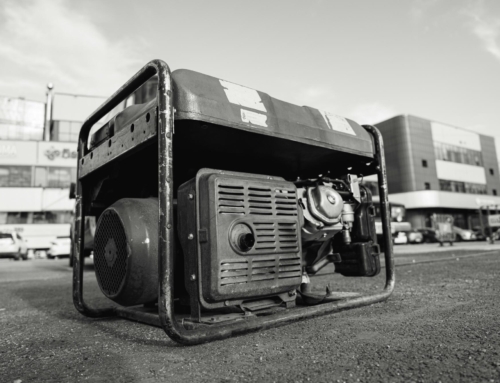
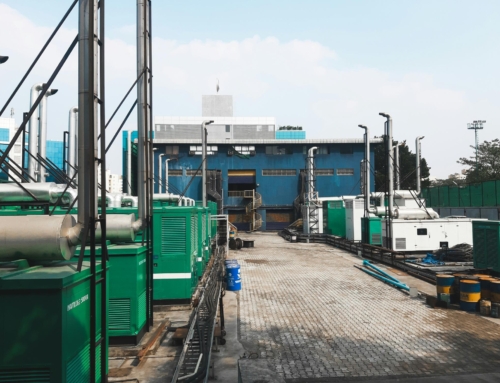
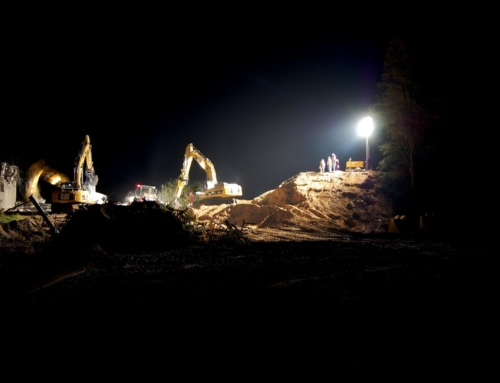
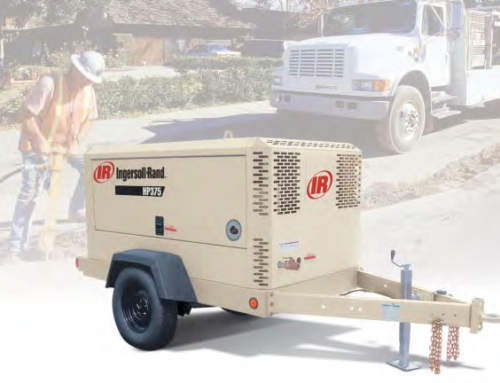
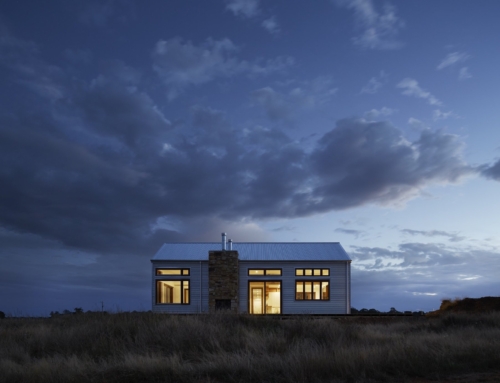
Leave A Comment